Deep in the eucalyptus forests of Australia, an iconic marsupial spends up to 22 hours each day in what appears to be peaceful slumber. The koala, often mistakenly called a “koala bear,” has captivated the world with its teddy bear-like appearance and seemingly lazy lifestyle. But why exactly do koalas sleep so extensively, and what other fascinating behaviors do these unique creatures exhibit? This comprehensive look into koala behavior reveals that there’s much more to these animals than their drowsy reputation suggests. From their specialized diet to unusual vocal communications, koalas have evolved remarkable adaptations that have helped them survive in their specific ecological niche for millions of years.
The Sleep Champions: Why Koalas Need So Much Rest
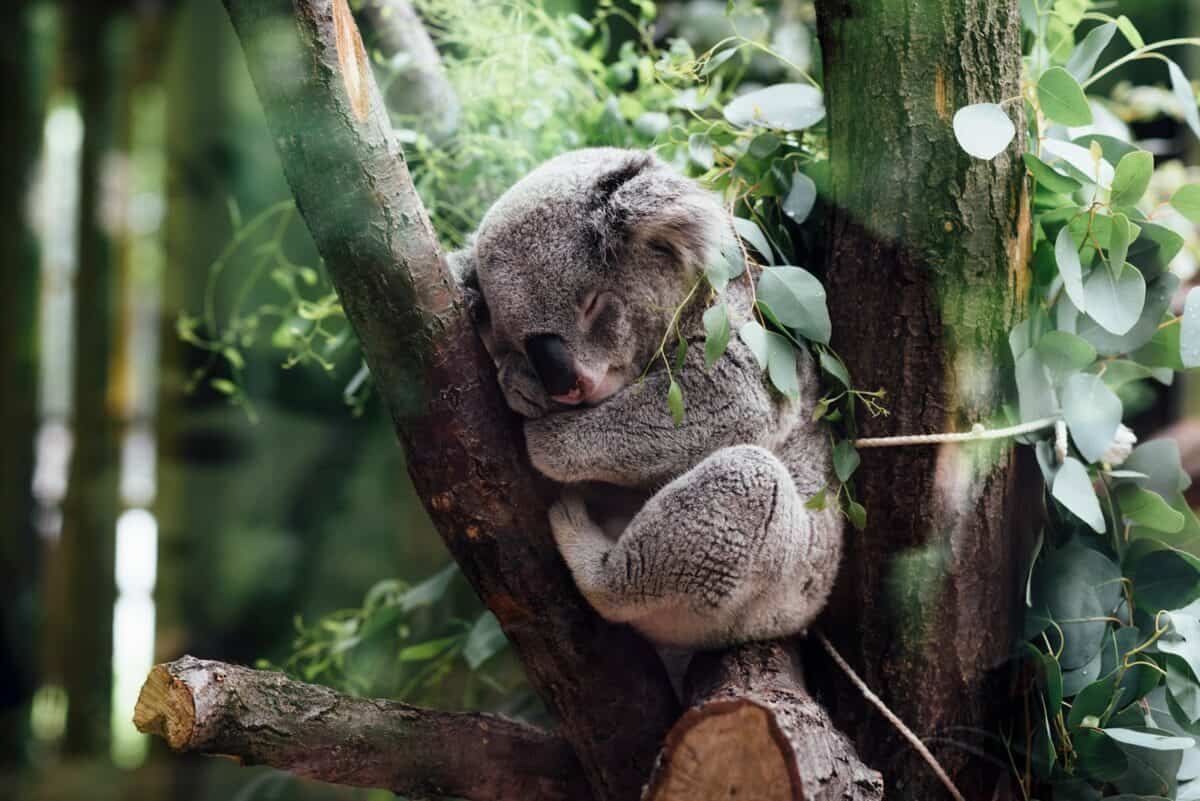
Koalas (Phascolarctos cinereus) are among the longest-sleeping mammals on Earth, dozing for 18-22 hours daily. This extraordinary sleep requirement is directly linked to their highly specialized diet of eucalyptus leaves. Eucalyptus is notoriously low in nutrients and calories while being high in fiber and containing toxins that most other animals cannot tolerate. The koala’s metabolism has adapted to extract what little energy these leaves provide, but this process is extremely inefficient. By sleeping for extended periods, koalas conserve the precious energy they acquire from their nutrient-poor diet. Their slow metabolism enables them to survive on fewer calories than would be expected for a mammal of their size (typically 4-15 kg or 9-33 pounds). Research has shown that this energy conservation strategy is crucial for their survival, as an active lifestyle would require far more calories than eucalyptus leaves could provide.
Eucalyptus Specialists: A Toxic Diet Few Can Handle

Koalas have one of the most specialized diets in the animal kingdom, with eucalyptus leaves making up over 90% of their food intake. This dietary specialization presents significant challenges, as eucalyptus contains phenolic and terpene compounds that are toxic to most animals. Koalas have evolved specialized physiological adaptations to detoxify these compounds in their liver. Their digestive system includes a remarkably long cecum—proportionally the longest of any mammal at up to 2 meters (6.6 feet)—that houses beneficial bacteria capable of breaking down the tough eucalyptus fibers. Despite these adaptations, eucalyptus remains a poor energy source, providing only about 480 kilojoules of energy per day. Interestingly, koalas are selective even within their narrow dietary range, preferring particular species among Australia’s more than 600 types of eucalyptus. Research has shown they typically eat from only about 30 species and strongly prefer certain ones based on nutritional content, toxin levels, and water content—a critical consideration given that koalas get most of their hydration from their leafy diet rather than from drinking water.
Brain Size and Sleep: The Unusual Koala Anatomy

One of the most fascinating aspects of koala physiology is their brain size relative to their body. Koalas have unusually small brains that fill only about 60% of their cranial cavity, with the remaining space filled with cerebrospinal fluid. This reduced brain size is believed to be an evolutionary adaptation to their low-energy lifestyle, as brain tissue requires significant energy to maintain. A smaller brain demands fewer calories to function, further helping koalas survive on their nutritionally poor diet. This evolutionary trade-off between brain size and energy conservation represents a remarkable adaptation to their ecological niche. The reduced brain size doesn’t appear to significantly impact the koalas’ ability to survive in their specific environment, as they’ve evolved precisely the cognitive abilities needed for their specialized lifestyle. However, this adaptation may limit their ability to adapt to new environments or changing conditions, which is one reason why habitat destruction poses such a severe threat to their survival.
The Unusual Vocal Repertoire of Koalas
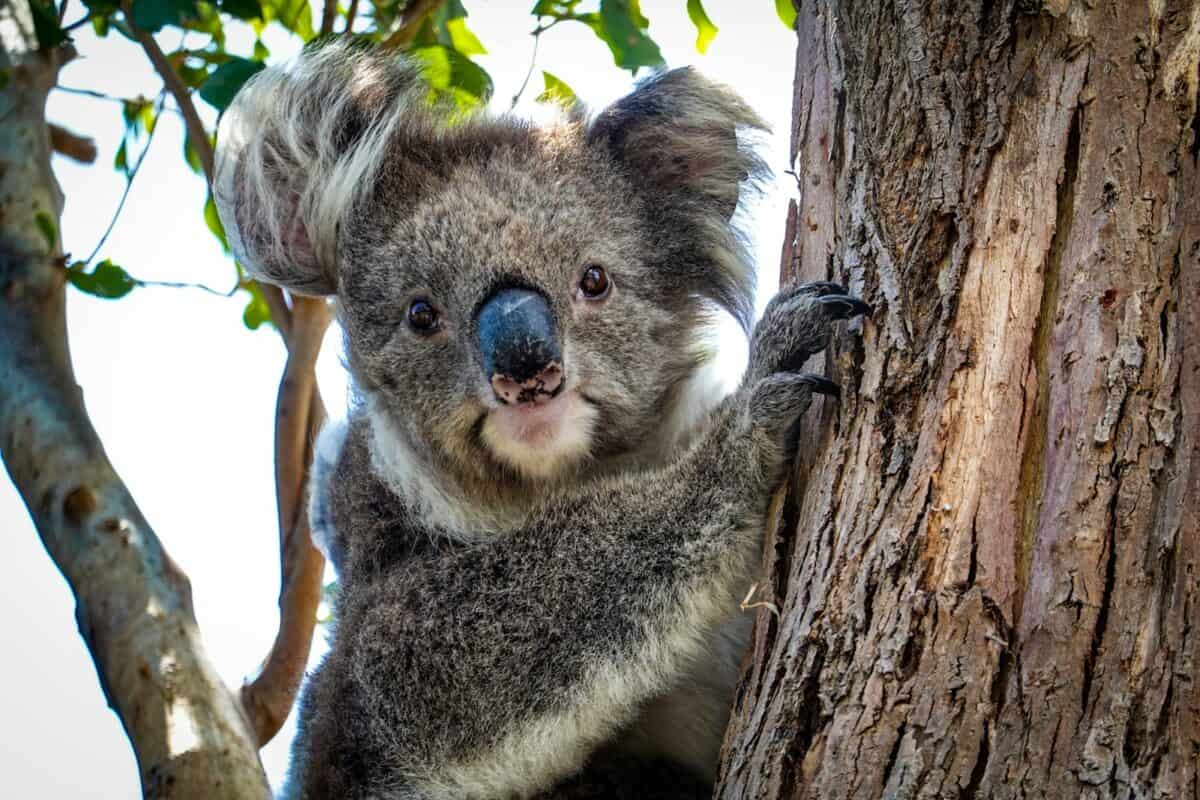
Despite their drowsy reputation, koalas produce a surprising array of vocalizations that serve important social functions. The most startling is the breeding male’s “bellow”—a series of harsh, loud calls that can be heard up to a kilometer away through the eucalyptus forests. These territorial calls, which sound improbably deep and resonant for an animal of the koala’s size, are produced by a specialized additional vocal organ not found in most other mammals. Male koalas possess a pair of vocal folds in their soft palate called velar vocal folds, which allow them to produce sounds much lower in pitch than would be expected from their body size. Female koalas communicate using softer “squawks” and “wails,” particularly when interacting with their young, while joeys (baby koalas) emit distinctive “squawks” when distressed. These vocalizations play crucial roles in maintaining social structures, establishing territories, and facilitating reproductive behaviors in what are otherwise mostly solitary animals.
Social Structure: The Solitary Life of Koalas

Despite popular imagery of koalas clustered together in eucalyptus trees, these marsupials are predominantly solitary animals with complex social structures governed by strict hierarchies and territory. Adult koalas maintain individual home ranges that vary in size according to habitat quality, population density, and the individual’s sex and age. Males typically establish larger territories that overlap with several females’ smaller home ranges. During the breeding season (approximately September to March in most regions), males become more active and aggressive in defending and expanding their territories, with dominant males securing access to multiple females. Outside of breeding interactions and the mother-offspring bond, koalas generally avoid direct contact with each other. This solitary lifestyle minimizes competition for limited resources and reflects their specialized ecological niche. Recent research using GPS tracking has revealed that these social structures are more nuanced than previously thought, with koalas showing some level of social recognition and maintaining loose social networks through scent marking and vocalization rather than direct interaction.
Mother-Joey Bond: Unique Parenting in Pouches

The relationship between female koalas and their offspring represents one of the most fascinating aspects of koala behavior. After a short gestation period of just 35 days, koala joeys are born in an extremely underdeveloped state—blind, hairless, and about the size of a jellybean (approximately 19 mm long and weighing less than 1 gram). The newborn must make an extraordinary journey from the birth canal to the mother’s downward-facing pouch, guided only by instinct and its relatively strong forelimbs. Once safely in the pouch, the joey attaches to one of two teats and remains there continuously for about six to seven months, gradually developing and growing. Around seven months of age, the joey begins to emerge from the pouch and transitions to riding on its mother’s back. During this period, the joey begins to consume small amounts of pre-digested eucalyptus leaves called “pap”—a specialized form of maternal feces that introduces the beneficial gut bacteria needed to digest eucalyptus. This microbial inoculation is crucial for the joey’s survival, as it provides the intestinal flora necessary to detoxify and extract nutrients from eucalyptus leaves. The mother-joey bond typically lasts until the joey is about 12 months old, when it becomes independent, though daughters sometimes remain in their mother’s home range longer than sons.
Koala Fingerprints: Surprising Similarities to Humans
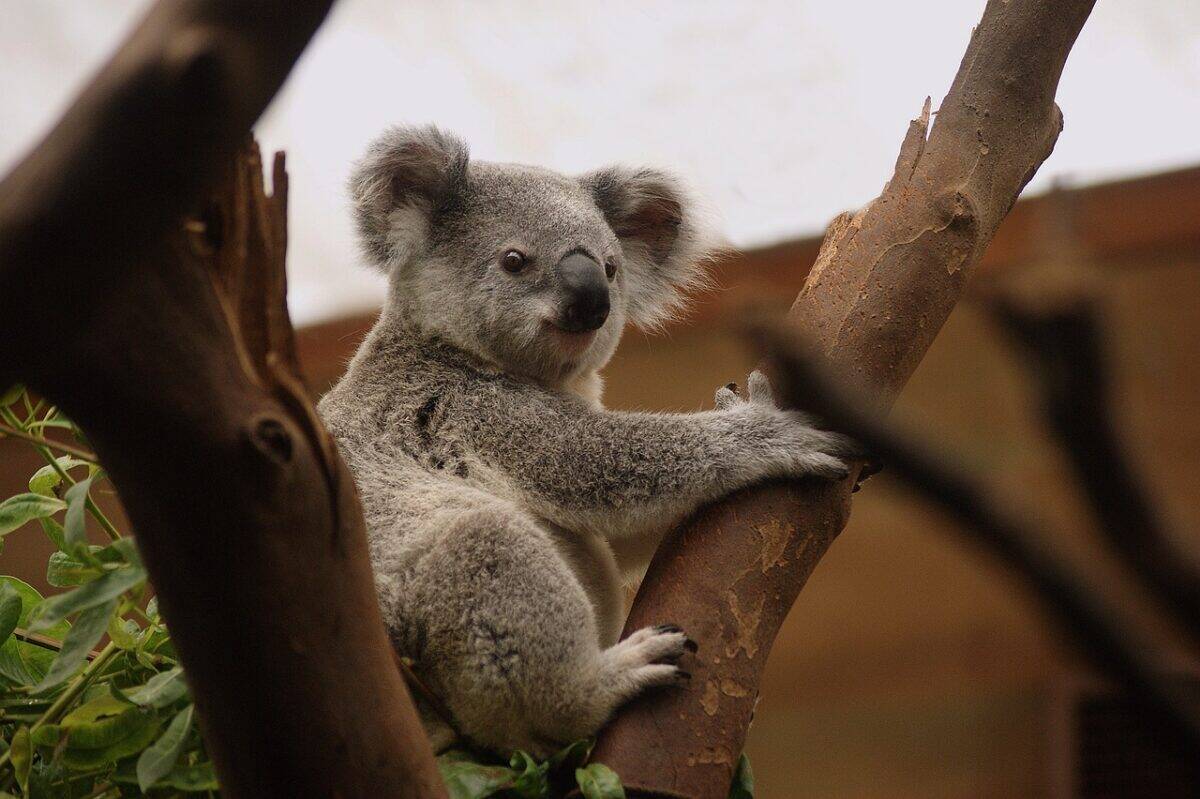
In one of nature’s most remarkable convergent evolutions, koalas have developed fingerprints that are virtually indistinguishable from human fingerprints, even under electron microscopes. This adaptation is particularly fascinating considering that koalas and humans last shared a common ancestor roughly 70 million years ago. The koala’s fingerprints evolved independently in response to similar environmental pressures—specifically, the need for enhanced grip when climbing trees and handling eucalyptus leaves. Each koala possesses unique fingerprints, just as humans do, with distinctive whorls, loops, and arches. These dermal ridges increase friction and improve the animal’s ability to evaluate the texture and quality of leaves before consumption. The similarity is so striking that koala prints have occasionally confused crime scene investigators in Australia. This convergent evolution provides a compelling example of how unrelated species can develop nearly identical traits when faced with similar environmental challenges and functional needs, despite taking vastly different evolutionary paths.
Climatic Adaptations: How Koalas Beat the Heat
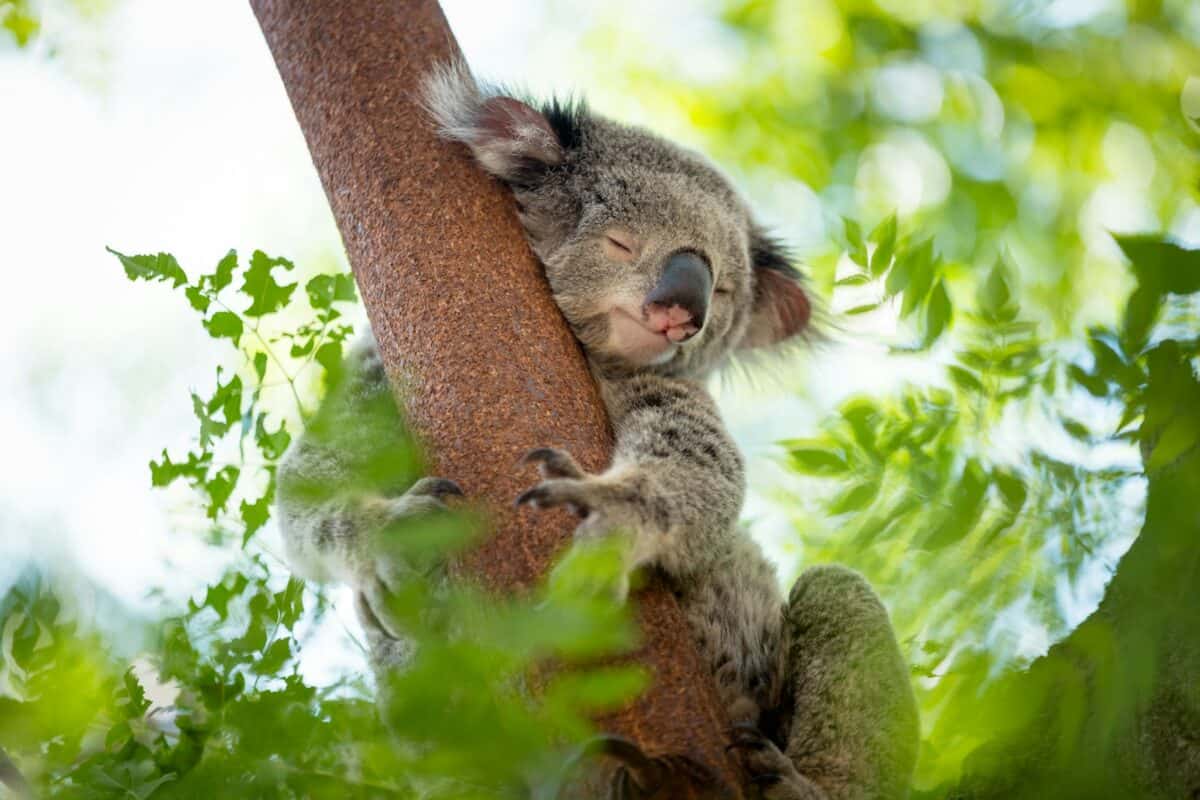
Koalas have evolved remarkable adaptations to cope with Australia’s variable and often extreme climate. Their dense fur serves dual purposes: the outer layer is water-resistant, protecting them during rain, while the soft, woolly underlayer provides insulation against both heat and cold. When temperatures rise, koalas employ behavioral thermoregulation, spreading themselves against cooler tree trunks or branches to dissipate body heat—a behavior known as “tree-hugging” that can reduce body temperature by up to 5°C (9°F). During extreme heat events, koalas may descend to the ground and seek shade or even swim across streams to reach cooler areas, despite generally avoiding water. Their relatively low metabolic rate also helps prevent overheating during Australia’s scorching summers. During colder periods, their thick fur and tendency to curl into a tight ball conserves body heat. These adaptations allow koalas to maintain their body temperature within a narrow optimal range while expending minimal energy, further supporting their low-energy lifestyle necessitated by their nutrient-poor diet.
The Mystery of Koala Drinking Behavior
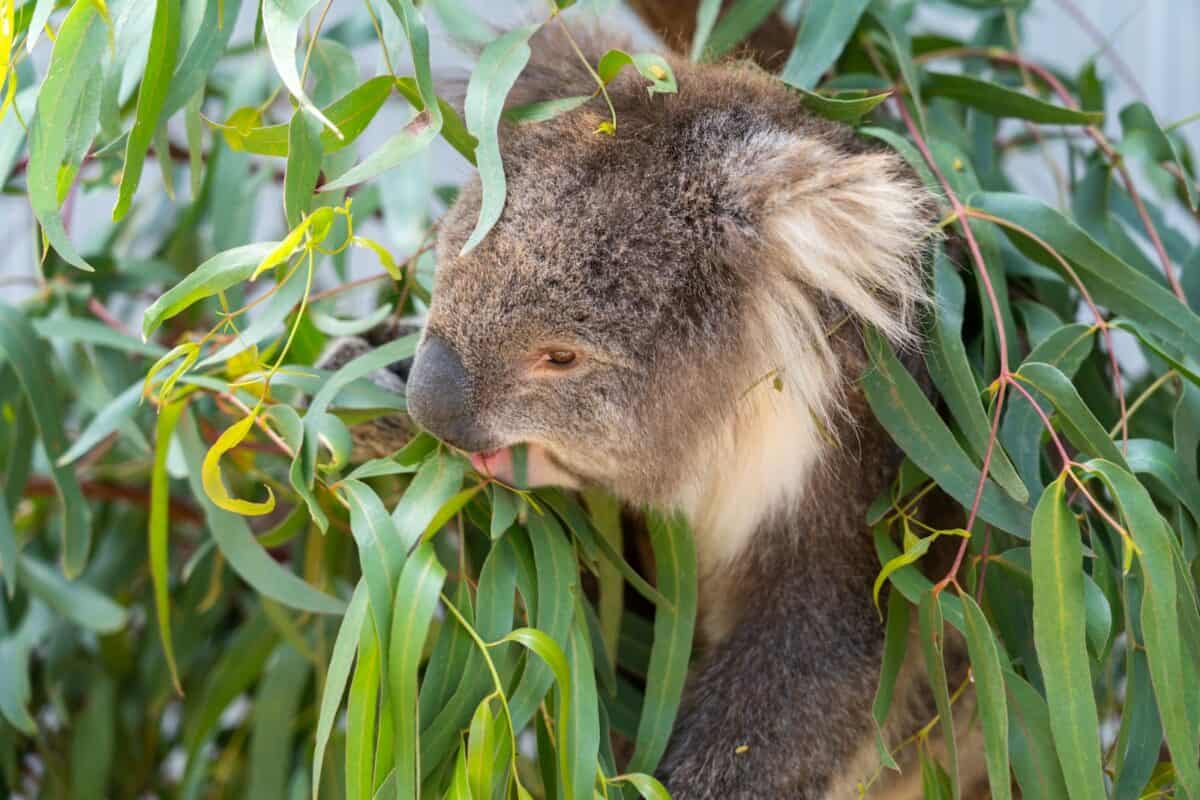
The name “koala” is thought to derive from an Aboriginal term meaning “no drink,” reflecting the long-held belief that koalas never drink water. While this isn’t strictly true, koalas have an extraordinary ability to meet most of their hydration needs through their diet. The eucalyptus leaves they consume contain approximately 55% water content, providing sufficient hydration under normal conditions. This adaptation reduces the need to descend from trees, where they’re most vulnerable to predators. However, research has shown that koalas will actively seek out water sources during drought conditions, extreme heat, or when suffering from illness. They’ve been observed licking water off tree trunks after rainfall and occasionally descending to drink from streams or artificial water stations. Climate change presents new challenges to this specialized hydration strategy, as increasing temperatures and more frequent droughts force koalas to spend more energy seeking water sources. Recent studies have documented increasing instances of koalas drinking from artificial water stations and swimming pools during heat waves, indicating how environmental changes are impacting their traditional behaviors.
Locomotion Patterns: The Energy-Saving Movements of Koalas

Koalas exhibit distinctive movement patterns that further complement their energy-conservation strategy. While capable of moving quickly when necessary, they typically adopt a slow, deliberate pace that minimizes energy expenditure. Their movement through the canopy is facilitated by powerful limbs and sharp claws that provide excellent grip. Koalas have specialized hands and feet with two opposable digits that function somewhat like thumbs, allowing for precise manipulation of branches and leaves. When on the ground, koalas move with a distinctive waddling gait at speeds of about 2-3 km/h (1.2-1.9 mph), though they can briefly accelerate to 10 km/h (6.2 mph) when threatened. They typically descend trees backward, maintaining a secure grip with their strong forelimbs. Research using accelerometers has shown that koalas minimize unnecessary movements, typically changing trees only once per day, usually at dusk. This highly efficient movement strategy, combined with their specialized grip adaptations, allows koalas to navigate their arboreal environment while conserving their limited energy reserves. Even their tree selection behavior follows energy-efficiency principles—koalas often choose trees based on factors that minimize energy expenditure, such as canopy connectivity and branch stability.
Health Challenges: Diseases Affecting Koala Populations

Koala populations face several significant health challenges that threaten their survival, with chlamydial infection being particularly devastating. Chlamydia in koalas can cause blindness, infertility, and urinary tract infections that can lead to a condition known as “dirty tail” or “wet bottom.” Studies indicate that chlamydia affects up to 100% of some koala populations, with clinical disease present in approximately 20-30% of individuals. This bacterial infection significantly impacts reproductive success and is a major factor in population declines. Another serious threat is Koala Retrovirus (KoRV), which can cause immune suppression and increase susceptibility to other diseases, including cancers like lymphoma and leukemia. KoRV is unusual because it exists both as an endogenous virus (integrated into the koala genome) and as an exogenous virus that can be transmitted between individuals. Research indicates that northern koala populations have KoRV permanently integrated into their genome, while southern populations show more variable infection rates. These health challenges, compounded by habitat loss, vehicle strikes, and dog attacks, have led to precipitous population declines, with koalas now listed as endangered in parts of their range. Conservation efforts include developing vaccines against chlamydia, establishing wildlife corridors to connect fragmented habitats, and implementing breeding programs to maintain genetic diversity.
The koala’s seemingly lazy lifestyle represents not indolence but a remarkable suite of adaptations that have allowed these unique marsupials to thrive in a challenging ecological niche. Their extensive sleep patterns, specialized digestive system, reduced brain size, and numerous other physiological and behavioral adaptations work in concert to overcome the significant challenge of subsisting on a toxic, nutrient-poor diet. By understanding these adaptations, we gain insight not only into the fascinating biology of koalas but also into the broader principles of evolution and ecological specialization. As koalas face mounting threats from habitat loss, climate change, disease, and human encroachment, this understanding becomes increasingly vital for effective conservation efforts. The koala’s story reminds us that what may appear as simple or even primitive behavior often masks complex and finely tuned adaptations that reflect millions of years of evolutionary refinement—a testament to nature’s ingenuity in solving the challenges of survival.
- Why Koalas Sleep So Much — And Other Curious Behaviors - August 12, 2025
- 12 Large Dog Breeds That Are Surprisingly Gentle - August 11, 2025
- 15 Times Elephants Proved Just How Smart They Are - August 11, 2025

